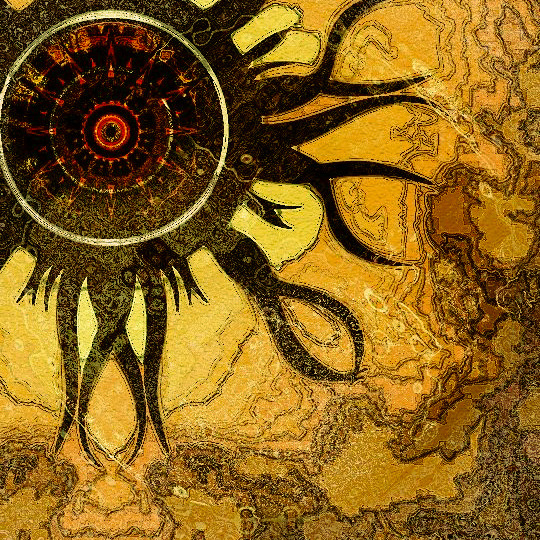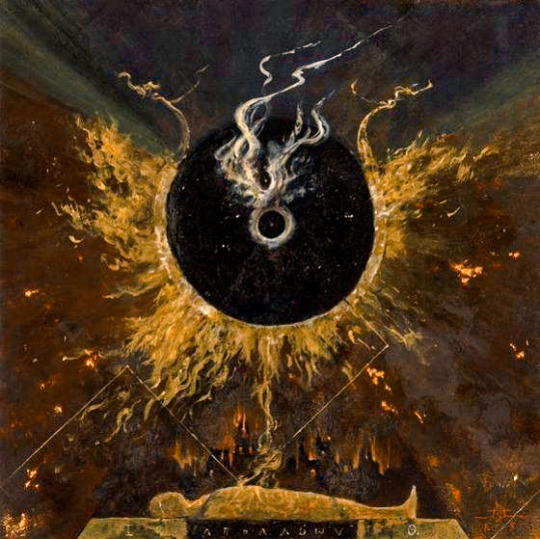#Robert W. Chambers
Text
An interesting collection published in 2017 by Pushkin Press, 71-75 Shelton Street, London WC2H 9JQ. THE KING IN YELLOW was a volume first printed in 1895 and authored by Robert W. Chambers. No individual tale was called, THE KING IN YELLOW. The stories were complex, vauge and open to interpretation. Certainly Chambers himself was influenced in this work by 2 minor and nebulous tales previously written by Ambrose Bierce. The handsome cover of this particular book is a somewhat stylized and abstract take on the poster Chambers himself created to advertise his own book. The design and cover illustration was by Leo Nicholls. Chambers (1865-1933) attended art school in Paris and himself was a respected painter with more than a few salon exhibits. Chambers, who was American by birth and desended from a well to do New York family, turned to writing rather than art. Though he is best known today as a writer of horror fiction, he would eventually turn to romance-type fiction and became one of the most successful authors of the early twentieth century. Despite the general belief that Chambers King in Yellow tales held a direct link to HPL's work, that is demonstrably untrue. Nonetheless Lovecraft respected Chambers horror tales and mentions some of his characters and place names in passing in his own works. The idea that The King in Yellow was in fact Hastur and a standard character in the so-called, Cthulhu Mythos, is all August Derleth and ZERO Lovecraft. (Exhibit 477)

3 notes
·
View notes
Text

“Will you be still?” she said. “Still as death,” I said. - Robert W. Chambers
Virgil Finlay - The Messenger
(Famous Fantastic Mysteries - April 1948)
#virgil finlay#the messenger#robert w. chambers#famous fantastic mysteries#pulp art#horror art#art#story illustration#illustration
132 notes
·
View notes
Text
La folla
Ero in strada con Pierrot, là dove la folla era più fitta. Tutti gli occhi erano puntati su di me.
«Di cosa ridono?» chiesi, ma lui spolverò il gesso dalla mia cappa nera con un sogghigno. «Non riesco a vedere; dev'essere qualcosa di curioso, forse un ladro onesto!»
Tutti gli occhi erano puntati su di me.
«Ti ha rubato la borsa!» risero.
«La mia borsa!», gridai, «Pierrot, aiuto! Un ladro!»
Risero: «Ti ha rubato la borsa!»
Poi Verità si fece avanti, tenendo uno specchio. «Se il ladro è onesto», gridò Verità, «Pierrot lo troverà con questo specchio!» Ma lui spolverò il gesso dalla mia cappa nera con un sogghigno.
«Vedi», disse, «Verità è un ladro onesto, ti riporta il tuo specchio.»
Tutti gli occhi erano puntati su di me.
«Arrestate Verità!» gridai, dimenticando di aver perso non uno specchio ma una borsa, nella strada con Pierrot, là dove la folla era più fitta.
0 notes
Text
a knife here, a rag there; padded depths to, and fro
For a while, not noticing her, he fussed about his canvas, using a knife here, a rag there, passing to and fro across the scaffolding, oblivious of the flight of time, until at length the waning light began to prophesy dusk, and he came to himself with a guilty start.
Below, in the studio, Valerie sat, fully dressed except for hat and gloves, head resting in the padded depths of an armchair, watching him in silence.
“I declare,” he said, looking down at her contritely, “I never meant to keep you all this time. Good lord! Have I been puttering up here for an hour and a half! It’s nearly eight o’clock! Why on earth didn’t you speak to me, Valerie?”
“It’s a braver girl than I am who'll venture to interrupt you at work, Kelly,” she said, laughingly.
ex Robert W. Chambers, The Common Law, Illustrated by Charles Dana Gibson (1911) : 71
U California copy/scan (via hathitrust) : link
same (via google books) : link
—
Robert W. Chambers (1865-1933) : wikipedia
0 notes
Text
putterings, 414-412
odds and ends, and every now and then
padded depths to, and fro,
knife here, rag there,
masts and spars; stern posts,
heart hooks, knees
more or less. a puttering.
It got nowhere,
was not seriously intended to get anywhere,
and soon flickered out altogether
puutterings | their index | these derivations | 20240326
1 note
·
View note
Text
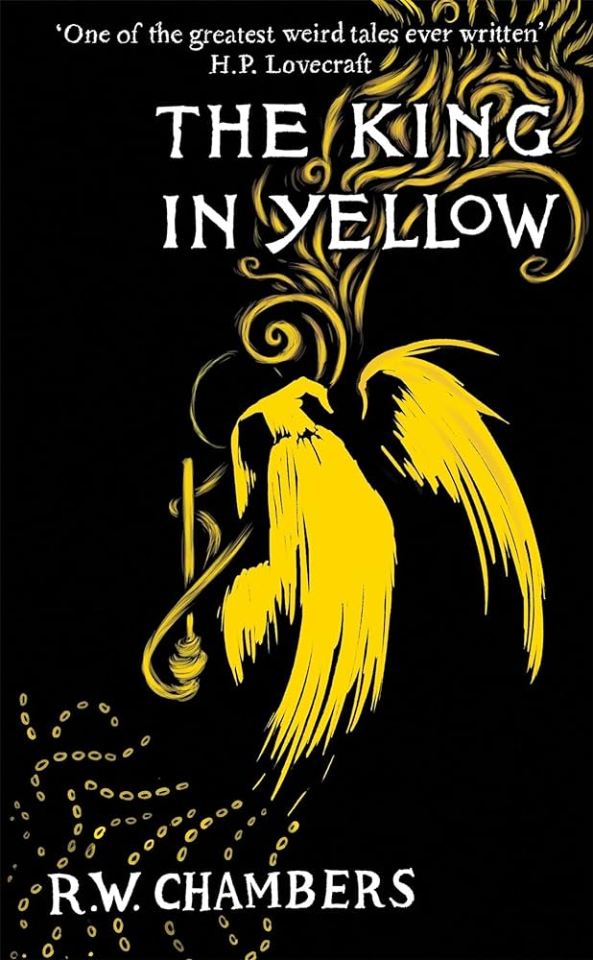
"The King in Yellow" is available to read here
#short story collections#short story collection#the king in yellow#robert w. chambers#19th century literature#english language literature#american literature#have you read this short fiction?#book polls#completed polls#links to text
22 notes
·
View notes
Text


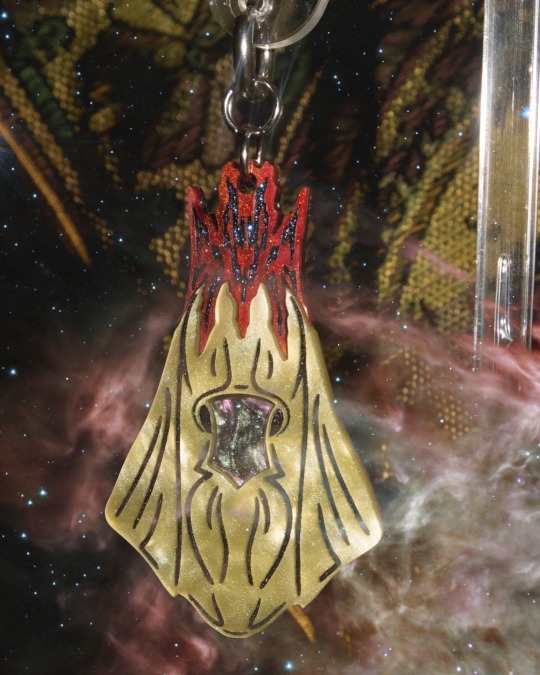
The King in Yellow.
Like a lot of folks, I've been watching the new season of 'True Detective', Night Country. I'm a huge fan of Issa Lopez so when I found out she was the show-runner this season, I was immediately on board! Whilst waiting for new episodes to drop, I decided to give the first season a shot too. & it was glorious!
It was really like - OH you want a hint of eldritch horror, satanic cults, global conspiracies, folk horror, incredibly unlikeable characters with depth, & STUNNING cinematography of the bayou + backwoods, WE GOT YOU!
PLUS all the references to 'The King in Yellow' & Carcosa 💛
I'm just obsessed with the way that Robert Chambers created this being, that so heavily permeated horror literature, that Lovecraft included the king in his own mythos & the legend has only grown since then.
So I made my own interpretation of 'The King in Yellow' & turned him into earrings (as one does).
Super proud of them 🤘🏼 (will try to add them to my shop sometime next week)
#personal#the king in yellow#robert w. chambers#true detective#the yellow king#carcosa#the idol collective#eldritch horror#cosmic horror#h.p. lovecraft#lovecrafian#acrylic earrings#handmade earrings#horror art#shop small#night country#issa lópez
5 notes
·
View notes
Text

Just something I made because I love The King in Yellow.
#the king in yellow#robert w. chambers#theatre poster#digital art#fanart#the yellow sign#malevolent (podcast)#carcosa#hastur#lovecraftian horror#cosmic horror#theater poster
16 notes
·
View notes
Text
The King in Yellow
Along the shore the cloud waves break,
The twin suns sink behind the lake,
The shadows lengthen
In Carcosa.
Strange is the night where black stars rise,
And strange moons circle through the skies
But stranger still is
Lost Carcosa.
Songs that the Hyades shall sing,
Where flap the tatters of the King,
Must die unheard in
Dim Carcosa.
Song of my soul, my voice is dead;
Die thou, unsung, as tears unshed
Shall dry and die in
Lost Carcosa.
Cassilda's Song in "The King in Yellow," Act i, Scene 2.
– Robert W. Chambers, The King in Yellow. Guternberg link.
The Sith in Yellow
The edges of the object lit up in yellow, the outer pieces lifting off and whizzing in a synchronised dance. A yellow-tinged hologram appeared above the inner core, about thirty centimetres tall. Tattered robes covered the figure’s body. Fastened to their face was a mask that gave the appearance of a stiffened corpse. The apparition lifted its head and began to speak:
"Along the shore the cloud waves break,
The twin suns sink behind the lake,
The shadows lengthen
In Carcosa."
Twin Suns? What planet was it referring to? Tatooine?
Luke racked his brains. He had studied galaxy maps in detail as a child, determined to prepare for his career as a pilot. But nowhere on the most obscure map did he hear of a planet named 'Carcosa'.
"Strange is the night where the black stars rise,
And strange moons circle through the skies,
But stranger still is
Lost Carcosa."
Black stars? Black holes? The Death Star was one strange moon—was it talking about Alderaan? No, that didn't make sense—Vader existed long before the Death Star was built.
"Songs that the Rain-Bearers sing with,
Where flap the tatters of the Sith,
Must die unheard in
Dim Carcosa."
There wasn't much rain on Tatooine. But neither was there on many other planets. Tatoo myths were filled with Rain-Bearers, but never the word 'Sith'.
"Song of my soul, my voice is dead,
Die thou, unsung, as tears unshed
Shall dry and die in
Lost Carcosa."
Grief without tears? Those turns of phrase riddled Tatoo funeral songs. Carcosa had to be an old name for Tatooine.
Yes, strange sentences here and there, they mirrored songs Beru sung, poems from the middle of folk tales her own mother had told while weaving cloaks of bantha fur, and odd gestures the hologram made that reminded him of motions in Tusken sign language.
As the voice continued, Luke concluded it was telling a story. He felt the weight of a world once cherished die from greed and invasion; the legacy of slavery and the fight to be free. And grief, not just of a loved one but of a whole planet once lush and green now rendered into a shadow of what it once was.
It commonly held that Tatooine was a desert when humans arrived, but the stories and legends in Tusken folklore said otherwise.
There was more, lurking behind the story, the edge of a maddening thought, but every time it came near, an old word in High Basic would distract him and knock it from his grasp.
Read the rest on Ao3.
#star wars fanfiction#cosmic horror#eldritch horror#Robert W. Chambers#The King in Yellow#the sith in yellow#my wriiting#luke skywalker#carcosa
9 notes
·
View notes
Text
Whenever I've contemplated the recent Canadian MAID policies, my mind has inevitably wandered to Robert W. Chambers' justly revered weird tale "The Repairer of Reputations" and the Government Lethal Chambers that are such a key thematic element therein. I am not going to imply that the Canadian health services have fallen under the sway of the Yellow Sign (although...), but I've always noticed in reading and listening to other moderns' response to the story that there's important period context that gets largely missed. This is understandable - most people haven't read nearly as many fin-de-siècle and Edwardian era 'Scientific Romances' as I have, for the good reason that most of them are really quite bad.
But without historical context, it's easy to miss exactly what the alternate future New York City that the story may or may not be set in represents. It's a whole collection of relatively common Progressive era tropes representing peoples' hopes and fears about the immediate future, arranged in an optimistic (even Utopian) key. The obsession with civic beautification, the gleaming fleets of battleships that are almost an extension of the "good architecture [that] was [everywhere] replacing bad," the optimistic hope that race problems could be settled for all times and peaceably without any then-unseemly 'mixing' (Indian scouts! an "independent negro state of Suanee"! checking of immigration!), a militarism that's as much about pomp & love of regimentation as about actual wars, the "colossal Congress of Religions" that "laid [bigotry and intolerance] in their graves" and "began to draw warring sects together", a love of orderly centralization... This is all the sort of stuff that moderate, bien-pensant Progressives and Fabians of Chambers' day would have cheered on. Even the "war with Germany," involving an unlikely occupation of the Virginia coast, is an optimistic take on the Invasion Story subgenre that was becoming common at the time (the scars it left "had been forgotten in the joy over repeated naval victories, and the subsequent ridiculous plight of General Von Gartenlaube's forces in the State of New Jersey.") It's all of a piece, an expression of boundless Columbian Exposition optimism and faith in Reason and Progress to bring forth an Earthly Paradise.
And so are the Lethal Chambers. They are reasonable, and graceful, and beautiful, solutions to the problem of hopelessness. Reasonably, why should a person not have a right "to end an existence which may have become intolerable to him, through physical suffering or mental despair"? Too, "the community will be benefited by the removal of such people from their midst." And the Chamber is beautiful, placed in a verdant park, decorated with Grecian columns and marble statues, designed to make one's exit from this world as rationally elegant as possible. It's all done discreetly, in the best possible taste.
This is why the story is given this whole setup, why it begins with what seems today to be a very disorienting bit of archeofuturistic world-building. In the context of this world of rational hopes rationally filled, not only is Castaigne's descent into madness more shockingly out of place, but it also represents an irruption into that world of something else, something old and strange and powerful. There is a reason that Wilde & Castaigne invoke the trappings of the archaic medievalism that the Progressive world sought to do away with forever, and a reason why Wilde deals (or claims to deal) in blackmail and conspiracy. All the flotsam and jetsam that, it was hoped, could be swept away like the old slums, bob inevitably to the surface.
As something of a reactionary, I'm inclined to take a political reading of this - "don't immanentize the eschaton!" as the slogan goes. But, like all really good fiction, "The Repairer of Reputations" is about something deeper than politics. I leave further interpretation as an exercise to the reader.
19 notes
·
View notes
Text
Camilla: You, sir, should unmask.
Stranger: Indeed?
Cassilda: Indeed it’s time. We all have laid aside disguise but you.
Stranger:

I wear no mask.
Camilla: (Terrified, aside to Cassilda.) No mask? No mask!
14 notes
·
View notes
Text
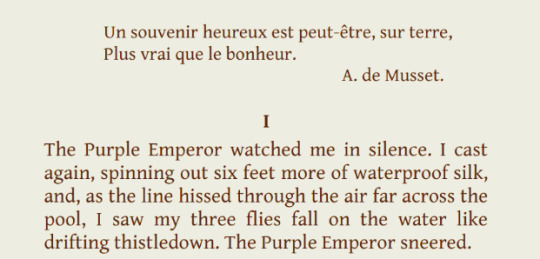
#literally one of my favorite openers of a story ever#Robert Chambers#The Purple Emperor#The Mystery of Choice#Robert W. Chambers#19th Century#American Artist
1 note
·
View note
Text
This poster was an origional creation of Robert W. Chambers himself to advertise his book of short stories called THE KING IN YELLOW. None of the short stories of the collection bore that title. Chambers had been an art student in Paris, France for many years. He had several showings at salons in Paris too. Despite this Chambers turned to writing as a profession. The King In Yellow tales are today the most well known of his works. In time Chambers would turn from horror to writing utterly forgettable romance type fiction. Chambers and his art school friend Gibson eventually gained fame for the invention of 'The Gibson Girl', a new, progressive and relatively independent type of female character emerging at the turn of the century. These post-Victorian females were the stars of Chambers more commercially successful, but artistically lacking works. Regarding the King In Yellow poster created by Chambers himself: it is obvious that there are no tentacles emerging at the base of ' The King's' yellow gown. Chambers best work was done long before Lovecraft's tales appeared in pulp magazines. There is no evidence that Chambers knew who Lovecraft was. Chambers died in 1933, 4 years before Lovecraft himself passed. His KING IN YELLOW book was first published in 1895. Though HPL respected Chambers supernatural tales and referenced certain characters from Chambers (Who had himself lifted bits of his own self-contained mythology from 2 tales from Ambrose Bierce ( it's a long story!) it was really August Derleth who worked to connect Bierce, Chambers, and Lovecraft, building the utter fantasy that there was any actual conscious connection in their work! Yeah, for all the good Derleth did, he really made a mess of things for anybody hoping to study Lovecraft for Lovecraft! (Exhibit 260)

2 notes
·
View notes
Text

Gray! What Are You Doing Here Without Your Uniform? Illustration by Norman Price for Love and the Lieutenant by Robert W. Chambers (1934)
76 notes
·
View notes
Text

One of the main characters from "The Adventures of a Modest Man" is named Ellis.
And also acts in the same fashion as Ellis from Left 4 Dead 2. Complete with the katana comment.
#the adventures of a modest man#robert w. chambers#project gutenberg#short stories#ellis#ellis l4d2#ellis left 4 dead 2
5 notes
·
View notes
